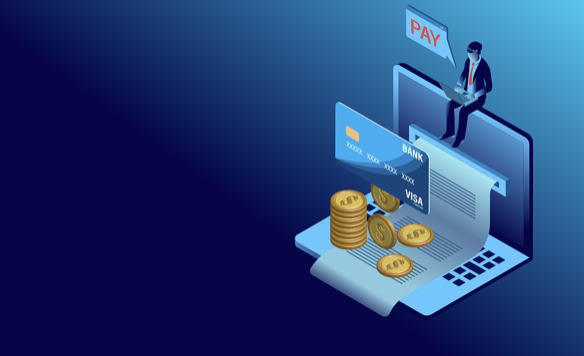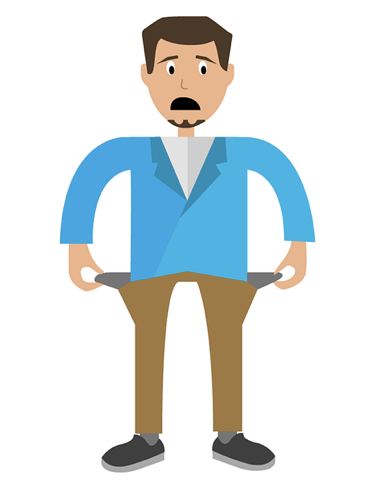
Breaking free from debt can be challenging. Many people find establishing savings plus bringing in a sufficient income to satisfy the monthly expenditures virtually impossible.
The problem is that continuing to repay minimum monthly installments results in compounding interest and accumulating more outstanding debt. That can mean developing debt cycles that may take years to eliminate. Some methods like refinansiere or debt refinance can be a simplistic and non-painful approach. It allows more freedom in the budget freeing up funds to pay more than the basic minimum on the other bills. Your strategy will depend on your specific circumstances and future objectives.
Excessive debt will negatively impact attempts to qualify for the credit, with lenders charging higher rates or rejecting the requests altogether based on the debt-to-income ratio. It can also adversely affect your lifestyle, as landlords or mortgage brokers will perceive too much debt as a red flag for being unable to afford a monthly installment.
Employers, particularly if you are in a position of authority, will avoid your application after a credit check since you will be more prone to accepting bribes, given your financial situation. The ripple effect is quite extensive, and the real problem is that many households in just this country are in excessive debt, greater than $90,000. Let us see how we can break free.

What Will Be Your Debt Elimination Strategy
Many households within the US are in excessive debt of over $90,000. The funds account for having a house to pay for, an auto or two, student loans, credit cards, consumer loans, and on. Many people live on a median income, making affording this level of debt challenging.
Without taking on a side gig or getting more education to go higher with a present employer, people are challenged to repay these debts, let alone create savings. The recommendation is to have established savings that hold roughly three months of expenses in case you lose your job or become ill.
If bringing in more income does not seem to work, the priority would be finding an effective way to pay down or eliminate some of the debt. Consider some of these suggestions when you see your debt spiraling out of control.
- Debt refinance
Refinancing debt is not the same thing as consolidating debt though these two concepts are often confused as one and the same thing. With refinancing debt, one bill is chosen to attempt to get a better rate and more favorable terms.
Consolidation is when all the higher-interest debt is combined and repaid in full of a single loan leaving one monthly repayment with a lower rate and better terms. This is usually done with credit cards.
Debt refinance is often seen with mortgages, autos, and sometimes with personal loans or student debt. Refinancing a home loan can be as lengthy, time intensive, and costly as the initial mortgage process.
It is essential to pay close attention to the terms, fees, and interest rates to ensure the process will save you more than it costs. A personal loan can refinance auto, other personal, and student lending. This unsecured product will give you a fixed rate, set repayments, and a designated duration.
Again, compare lenders when choosing to refinance, avoiding as many fees as possible to ensure you save more than you will ultimately pay out. The primary objective of refinance is to save money.
Find out the details on debt refinancing at https://www.rbradvisory.co.uk/articles/what-is-debt-refinancing/.
- Consolidate debt.
Consolidating debt is a whole other process than refinancing because it can eliminate a pile of high-interest debt into one single monthly repayment.
If you have many credit card bills, a lot of student loans, or perhaps you have many medical expenses each month, these can all be combined into a more manageable repayment. Usually, borrowers will choose a consumer or personal loan, often carrying a lower interest than most credit cards.
Instead of needing to keep track of different minimum monthly dues and repayment dates or being saddled with varying compounding interest accounts, you can avoid the hassle and potential for a delayed repayment or missing one altogether.
You can receive a lump sum amount with a personal loan and repay each of these accounts in full, freeing up funds with your monthly budget that you can apply to other debt to get rid of it faster.
Perhaps pay an extra house or auto repayment, which adds up over time. The only thing to ensure is there are no early repayment penalties.
- The “snowball effect”
The snowball effect is a debt strategy that takes you away from looking at the entire accumulation as a whole, which can be overwhelming, and instead wants you to focus on the smallest bill in the pile.
If you are attempting to pay greater amounts on each bill to try to eliminate as much debt as possible all at once, you are defeating yourself. Instead, tackle one at a time. Again, look at the credit cards and loans to see which has the lowest balance.
For the rest of the bills, you will make the minimum monthly due, but for this small balance, you will dump as much of your income, extra funds, a raise, and everything into this debt to eliminate it as fast as possible.
Once it is gone, it will feel exhilarating and encourage you to move on to what will now be the next lowest balance.
- Negotiate with creditors.
When the debt becomes overwhelming, and you have to get out from under it sooner rather than later to avoid the potential for default or, worse, bankruptcy, it is wise to contact each creditor to attempt to negotiate settlements that you know you can accomplish without a struggle.
You do not want to commit to a repayment plan or a payoff that will cause more strife for you.
Generally, creditors are very receptive to negotiating a lower settlement offer since they will at least be receiving a repayment, and you made contact instead of avoiding the situation and allowing it to go into default and collections, a process creditors prefer to avoid.
While it can be somewhat intimidating to contact financial departments, you do have the option of using third-party non-profit assistance in doing so. A non-profit counselor will reach out to the creditors on your behalf to negotiate based on the terms you determine through consultations in mediation with them.
It is wise to avoid the for-fee services and also keep paying the debt until a settlement has been reached. The priority is to attempt to maintain a strong credit profile throughout the process.
Final Thought
Debt can be all-consuming, taking over before you realize a problem is forming. Digging out from under the mess can be an exceptionally challenging undertaking. Some of these strategies can put you on track to recovery, but each requires a solid commitment. That is especially true if you choose to either refinance debt or consolidate some of the higher-interest debt like credit cards or loan products.
In each of these situations, the possibility is there to use the extra funds freed up from the processes to create more debt creating an even bigger problem than you had previously. Nowadays, more people are committing to eliminating debt and focusing on establishing better financial health.
The priority is to try to determine how things got so out of hand with your finances. Then figure out a method for behavior modification to prevent future occurrences of higher-interest debt accumulation that once again leads to debt cycling.
Once you find your monthly expenditures within a comfortable and manageable standpoint, you want to avoid any temptation to add to this with the excuse that one small bill will not affect you too much. That is probably how things originally got out of control.
